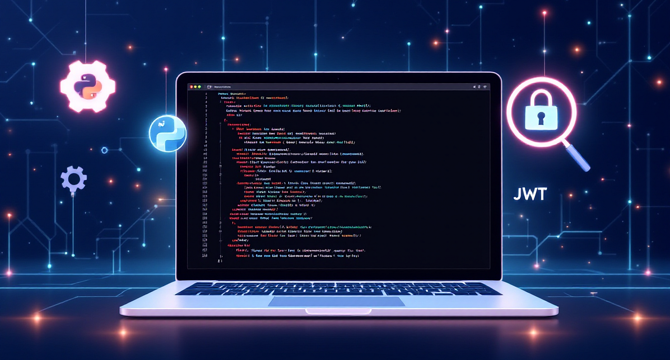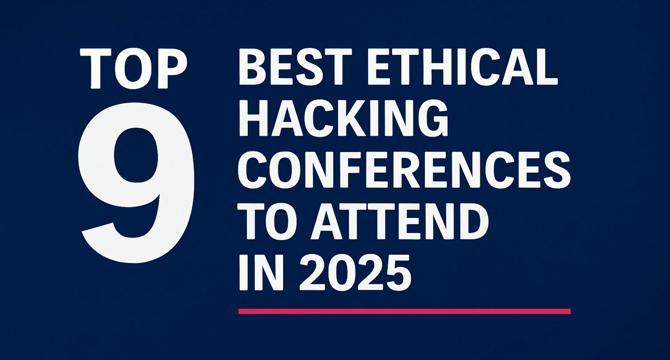Programming News
Infoq
3.3k

Image Credit: Infoq
Adoption of the Model Context Protocol Within the Java Ecosystem
- The Java MCP Server Configuration Generator, created by Max Rydahl Andersen, allows developers to run Model Context Protocol (MCP) servers with JBang.
- Model Context Protocol (MCP), introduced in 2024, is an open standard for providing context to Large Language Models (LLMs).
- Companies like OpenAI, Google, and GitHub have announced support for MCP, enabling developers to integrate tools with LLMs.
- Java frameworks like LangChain4j, Quarkus, Spring AI, Model Context Protocol SDK, and JBang have recently announced support for the MCP.
Read Full Article
6 Likes
Medium
2.3k

Image Credit: Medium
Save Hours Managing Ghost with These Python Scripts
- A blog owner running a self-hosted Ghost instance encountered limitations in the Ghost Admin interface that made management inefficient and error-prone.
- To address the challenges, they developed three Python scripts utilizing the Ghost Admin API with JWT authentication, providing a more efficient and streamlined approach.
- The scripts enable programmatically managing content, such as updating posts based on specific criteria like visibility and membership tiers, and searching for posts by title.
- This approach saved significant time and offered more control over the content management process, emphasizing the ease of combining Ghost's API capabilities with the power of Python.
Read Full Article
24 Likes
Dev
274

Image Credit: Dev
Top 5 JavaScript Unit Testing Frameworks
- Unit testing frameworks in JavaScript facilitate the testing of small code units to ensure functionality and detect errors early.
- Benefits include error detection, improved code quality, faster development, and refactoring confidence.
- Popular frameworks like Jest, Mocha, Jasmine, Ava, and QUnit offer unique features for different testing needs.
- Jest, favored for React apps, provides zero configuration, snapshot testing, built-in mocking, and parallel test execution.
- Mocha, known for flexibility, supports various assertion libraries and asynchronous testing for Node.js apps.
- Jasmine, a behavior-driven framework, offers BDD syntax, built-in spies, mocks, and stubs, and supports asynchronous testing.
- Ava is a minimalistic test runner focusing on speed, concurrent testing, promise-based operations, and isolated test environments.
- QUnit, simple and lightweight, suits jQuery projects, asynchronous testing, organized test suites, and plugin support.
- Choosing the right framework depends on project nature, tools, and test requirements; Jest, Mocha, Jasmine, Ava, or QUnit may be suitable.
- By incorporating unit testing frameworks, developers automate testing, catch bugs early, and improve code quality and reliability.
Read Full Article
16 Likes
Dev
434

Image Credit: Dev
Behind the Build: Portfolio Process
- Building a portfolio is about showcasing skills and ensuring seamless functionality using tools like Vite, Tailwind CSS, and TypeScript.
- Key goals included speed, SEO optimization, minimalist design, and scalable code.
- Tools like Vite, TypeScript, Tailwind CSS, PostCSS, and ESLint were chosen for fast development, code quality, custom design, CSS enhancements, and clean code, respectively.
- SEO optimization involved semantic HTML, optimized assets, responsive design, and clean URL structure for user-friendly and search engine-friendly websites.
Read Full Article
26 Likes
Discover more
- Software News
- Web Design
- Devops News
- Open Source News
- Databases
- Cloud News
- Product Management News
- Operating Systems News
- Agile Methodology News
- Computer Engineering
- Startup News
- Cryptocurrency News
- Technology News
- Blockchain News
- Data Science News
- AR News
- Apple News
- Cyber Security News
- Leadership News
- Gaming News
- Automobiles News
Medium
146
Image Credit: Medium
Cursor is Amazing! But…
- A social game was built to test Cursor's capabilities where players had to give wrong answers while staying on topic.
- Challenges were faced such as difficulty in understanding code connections, bugs arising during fixes, and creating unnecessarily complicated logic.
- Issues included Cursor miscounting final answers, generating repetitive questions, and reusing existing logic instead of innovating.
- Utilizing Cursor Rules can help manage AI suggestions and mitigate challenges in coding projects, despite some limitations in AI-driven coding assistants.
Read Full Article
8 Likes
Dev
269

Image Credit: Dev
Quick Guide — Adding User Authentication to Your Streamlit App
- Streamlit makes it easy to turn a Python script into a web app, but you need user authentication for ongoing usage.
- Three approaches to authentication: Open ID Connect (OIDC), Streamlit Authenticator, and Squadbase.
- OIDC delegates login to identity providers, Streamlit Authenticator provides in-code login, and Squadbase offers hosting with built-in auth.
- Decide based on existing SSO, simplicity vs. features needed, or hosting preferences. Check the full article for detailed code and analysis.
Read Full Article
16 Likes
Insider
416

Image Credit: Insider
Coding isn't dead, but how it's taught needs to change, says Google DeepMind research scientist
- Stefania Druga, a research scientist at Google DeepMind and creator of AI education platform Cognimates, advocates for early AI literacy in children to promote healthy tech relationships through 'co-creation.' Druga emphasizes that coding and AI skills will remain relevant, but the approach to teaching them needs a revamp.
- Druga aims to steer kids towards using AI to 'co-create' rather than resorting to shortcuts like cheating. She highlights the importance of reevaluating how coding is taught in educational settings to enhance critical thinking and discourage over-reliance on technology for completing tasks.
- Through her platform Cognimates, Druga facilitates AI literacy by engaging children in hands-on projects like game development and robot programming. The goal is to provide a safe environment for kids to explore and experiment with technology that will play a significant role in their future.
- Druga believes in fostering children's creativity and agency by encouraging 'co-creation' with AI models instead of spoon-feeding answers. She stresses the necessity of adjusting educational approaches and tool designs to accommodate young people's evolving learning needs and innovative thinking.
- According to Druga, preparing kids with AI and coding skills at an early age is crucial for adapting to the rapidly changing technological landscape. She challenges the notion that 'coding is dead,' emphasizing the enduring value of foundational skills, including understanding AI concepts.
- In the evolving tech job market, Druga emphasizes the significance of equipping individuals with adaptable skills rather than just technical proficiencies. She advocates for teaching resilience and adaptability to navigate uncertainties and rapid changes in technology-driven industries.
- Druga stresses the need for a shift in education paradigms to focus on developing transferrable skills that enable individuals to thrive in a dynamic work environment. She encourages children to embrace creativity, problem-solving, and adaptiveness as key attributes for future success.
- While tech industry dynamics and job requirements are evolving rapidly, Druga believes in empowering individuals to identify problems, build solutions, and innovate independently. She underscores the importance of fostering a mindset that embraces change and encourages proactive entrepreneurship.
- The overarching goal of Druga's educational initiatives is to democratize AI literacy and make tech skills accessible to all, irrespective of prior background knowledge. By instilling confidence and curiosity in learners, she aims to reshape traditional notions of labor market education.
- Druga envisions a future where individuals, regardless of age, background, or formal qualifications, can leverage AI and coding skills to innovate, create viable products, and navigate the evolving job landscape. Embracing change and continuous learning are key principles in her educational philosophy.
Read Full Article
25 Likes
Hackernoon
278

Image Credit: Hackernoon
We Wrote a Code Review Guide—Here's What Worked
- Code review guide created to align expectations, improve feedback quality, and promote collaborative reviews.
- Guide aimed at addressing inconsistent and unhelpful reviews, focusing on clarity, structure, and shared understanding.
- Document covers reviewer and author responsibilities, communication guidelines, turnaround expectations, and common pitfalls.
- Introduction of comment prefixing system (REQ, OPT, QQ) led to clearer feedback, more actionable reviews, and improved collaboration.
Read Full Article
16 Likes
Dev
452

Image Credit: Dev
Speech Synthesis API for Text-to-Speech
- The Speech Synthesis API for Text-to-Speech in JavaScript explores the historical context, web standards, and adoption in browsers.
- Specifications include key interfaces like speechSynthesis, SpeechSynthesisVoice, and SpeechSynthesisUtterance with methods for control.
- Integrating seamlessly with HTML, the API allows dynamic text-to-speech interaction on web platforms for user engagement.
- Code examples range from basic implementation to advanced scenarios involving voice customization and event handling.
- Comparisons with third-party libraries highlight cross-browser compatibility and native vs. browser implementations.
- Real-world applications include accessibility, educational tools, voice assistants, and dynamic content narration in marketing.
- Performance considerations emphasize smooth rendering, voice loading optimization, and latency reduction for speech output.
- Debugging techniques cover handling unsupported voices, audio output issues, and addressing user privacy concerns.
- The API offers a powerful tool for creating engaging web experiences, with references for further reading and best practices.
Read Full Article
27 Likes
Hackernoon
406

Image Credit: Hackernoon
Seamlessly Install Magnolia CMS With This Guide
- This article provides a detailed guide on installing Magnolia CMS, specifically version 6.2.
- Magnolia is an enterprise digital experience platform based on Content Repository for Java (JCR).
- Ensure Java (at least JRE SE) and Node.js with npm are installed before proceeding.
- Install Magnolia CLI using npm to facilitate development in Magnolia CMS.
- After installation, verify Magnolia CLI by running 'mgnl -v' in the shell.
- Download and install Magnolia by using the 'mgnl jumpstart' command with the specified version.
- Start Magnolia using 'mgnl start' command and access UI via localhost:8080/magnoliaAuthor.
- Login to the Author instance with default credentials (Username: superuser, Password: superuser).
- Additional steps include starting and stopping Magnolia using Tomcat commands.
- Configure settings like enabling IP Address access and configuring firewall as needed.
Read Full Article
24 Likes
Dev
324

Image Credit: Dev
JavaScript Memory Management
- Memory leaks can occur in JavaScript when objects are no longer needed but references to them still exist, causing performance issues and browser crashes.
- Common sources of memory leaks include over-retention of object scope, leaking DOM elements, global variables, and passing whole objects when only a small part is needed.
- Avoiding memory leaks involves limiting object references, using the delete operator, handling detached DOM nodes properly, managing timers and intervals, being careful with closures and callbacks, and properly removing event listeners.
- Tools like Chrome DevTools can be used to detect memory leaks by analyzing memory usage, taking snapshots, and identifying high memory-consuming functions. Preventing memory leaks in JavaScript requires avoiding global variables, removing unused DOM references, handling closures and timers efficiently, and breaking object references when no longer needed.
Read Full Article
19 Likes
Dev
333

Image Credit: Dev
The Journey of 3D Animation: From Pixelated Beginnings to Virtual Realities
- 3D animation has evolved from basic geometric shapes to hyper-realistic characters and immersive virtual worlds, revolutionizing various industries.
- The journey began in the 1960s with simple wireframe models, and the 1980s saw breakthroughs in motion and lighting with films like Luxo Jr.
- The 1990s witnessed the mainstream success of 3D animation with movies like Toy Story, leading to advancements in both technical and artistic aspects.
- In the current era, real-time rendering engines and VR/AR technologies have made 3D animation a tool for education, therapy, design, and entertainment, promising a future of accessibility and limitless creativity.
Read Full Article
20 Likes
Dev
18

Image Credit: Dev
What is TypeScript
- TypeScript is a statically typed, object-oriented, and compiled programming language developed by Microsoft. It is a superset of JavaScript with additional typing features.
- TypeScript code is first compiled into plain JavaScript, which can run on various JavaScript runtimes.
- Reasons to use TypeScript: Catching compile-time errors, static typing, clear data structure definitions with interfaces and type aliases, scalability and maintainability in large projects, and improved auto-completion and IDE support.
- TypeScript is widely used in frontend technologies like React, Angular, Vue, backend technologies like Node.js, Express, various frameworks/libraries like Next.js, NestJS, and tools like GraphQL and Prisma.
Read Full Article
1 Like
Nordicapis
370

10+ Signs You Might Need API Governance
- API governance involves overseeing API design, development, lifecycle, and security to ensure compliance with standards and industry best practices.
- The need for API governance is influenced by organization size, technology portfolio, and development culture.
- Signs you might need API governance include being API-first, having external consumers dependent on APIs, a large API catalog, operating in heavily regulated industries, using AI extensively, integrating with MCP, having conflicting API styles, dealing with multiple gateways, consistently versioning APIs, and experiencing drift in API specifications.
- API governance helps ensure consistent performance, security, and discoverability across APIs in large-scale operations.
- Industries such as government, finance, healthcare, and those meeting data regulations can benefit from API governance to ensure compliance and avoid fines.
- API governance is crucial when dealing with AI integration to counteract potential risks and vulnerabilities.
- Maintaining consistent API style, handling multiple gateways, proper versioning, documentation practices, and managing third-party APIs are areas where governance can be beneficial.
- For smaller organizations with a single API and minimal changes, enterprise API governance might be unnecessary.
- Implementing API governance can involve centralized control, federated ownership, and individual contributor-level checks.
- Successful API governance programs focus on aligning with organizational needs and culture while ensuring compliance and efficiency.
- Understanding the signs that point to the need for API governance and tailoring the approach to the organization's requirements are key to successful implementation.
Read Full Article
22 Likes
Hackernoon
36

Image Credit: Hackernoon
Every Major Ethical Hacking Conference Taking Place in 2025
- In 2025, various major ethical hacking conferences are providing opportunities for cybersecurity professionals and ethical hackers to enhance their skills and network with industry experts.
- DEF CON 33 in Las Vegas, known as the world's largest hacker convention, offers hands-on competitions, web exploitation villages, and top-tier talks for all skill levels.
- Black Hat USA focuses on the business and research aspects of cybersecurity, providing technical training, briefings on exploits, and networking opportunities for intermediate to advanced hackers.
- BSides Security Conferences, held globally throughout the year, are community-organized events emphasizing collaboration, making them ideal for beginners and mid-level learners.
- Hack In The Box (HITB) features deep technical presentations, hacking challenges, and specialized courses, catering to intermediate to advanced attendees across Europe, Asia, and UAE.
- Nullcon in India offers technical talks, villages like Hardware and Red Teaming, and hacker carnival activities for ethical hackers in Asia or those interested in global cybersecurity trends.
- THOTCON in Chicago provides a unique and intimate conference experience with quality technical talks, workshops, and reasonable pricing, attracting hackers seeking a more personal setting.
- CanSecWest in Canada, known for hosting Pwn2Own, focuses on exploit-oriented talks, live demonstrations of vulnerabilities, and in-depth technical discussions, suitable for senior ethical hackers.
- The Diana Initiative encourages diversity and inclusion in InfoSec, offering talks by diverse speakers, career guidance, and a supportive environment for women, non-binary individuals, and allies.
- RootedCON in Spain features talks on exploit development, malware, and hands-on workshops, catering to ethical hackers and red teamers in Europe and the Spanish-speaking community.
- Tips include planning early, selecting conferences based on goals, networking actively, and exploring hands-on learning experiences in villages like Red Team and Hardware Hacking.
Read Full Article
2 Likes
For uninterrupted reading, download the app